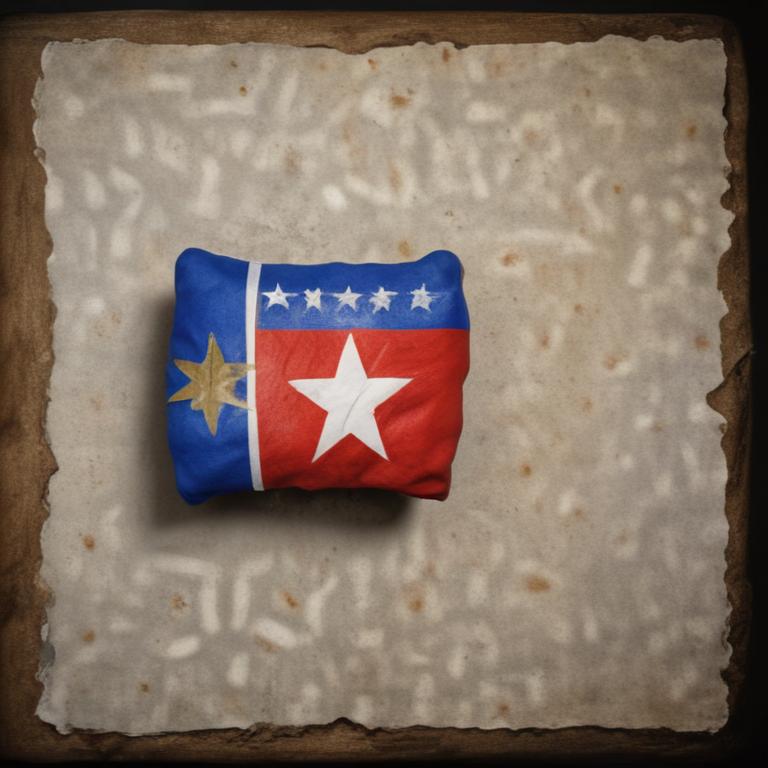发音 (Pronunciation):
IPA: /juːɡoʊˈslɑːviə/
中文近似: '尤戈斯拉维亚'
中文意思与词性 (Meanings & Part of Speech):
- 前南斯拉夫的一个国家(已于1992年解体) (n.)
- 历史上的一个联邦国家 (信息待补充)
例句 (Examples):
1. Yugoslavia was known for its diverse cultures.
(南斯拉夫以其多样的文化而闻名。)
2. The breakup of Yugoslavia led to several conflicts.
(南斯拉夫的解体导致了多次冲突。)
用法提示 (Usage Tip):
注意区分南斯拉夫与其他国家的历史背景。
更多关于 "yugoslavia" (More about "yugoslavia")
单词来源 (Etymology)
该词源于南斯拉夫语,意为“南方的斯拉夫人”。
词根词缀解析 (Root & Affix Analysis)
词根词缀解析待补充。
“yugoslavia”的字母与词根个性化解读
字母象形/引申义 (个性化参考)
- 字母 'y' 的象形或引申含义可能包括: 树 -> 蓬勃向上 -> 生长; 非典型音变; 元音/半元音: Y=I=A=E=O=U=W。
- 字母 'u' 的象形或引申含义可能包括: 中空 -> 容器 -> 用具 -> 使用; 音变: U=V=W; U=A=E=I=O=Y。
- 字母 'g' 的象形或引申含义可能包括: C的分化 (动, 头, 重要, 包围); 生长孕育 (土地); 走; 音变: G=K=C=H=J=Y。
- 字母 'o' 的象形或引申含义可能包括: 眼睛/嘴 (圆形) -> 张开, 转动; 圆柱; 音变: A=E=I=O=U=W=Y。
- 字母 's' 的象形或引申含义可能包括: 水波纹/走路痕迹 (S象形); 吐气轻细咝 -> 说话 (拟声); 音变: S=C=Z=TH=X。
- 字母 'l' 的象形或引申含义可能包括: 拉长, 长 (line); 舌头 -> 说 (language); 细, 少; 音变: L=M=N=R。
- 字母 'a' 的象形或引申含义可能包括: 牛角 (象形: 牛头, 力量, 能力); 下面宽上面尖 (形状) -> 延伸, 远处, 高处, 方向, 指示。
- 字母 'v' 的象形或引申含义可能包括: 山谷 -> 风口 -> 路 -> 往返/走 (via, vent); 牛角 -> 牛 -> 强壮征服 -> 能力价值 (val, vinc); 转和活 (vol同源); 手 (V=F); 音变: V=U=W; V=B=P=M=F。
- 字母 'i' 的象形或引申含义可能包括: 我 (an, any, one -> 人); 水滴 -> 水 (ice); 尖, 一点, 小 (inch); 元音互换: A=E=I=O=U=W=Y。
学习提示:以上针对单词 yugoslavia 的字母和词根解读,主要基于提供的特定象形及词根资料。这些提示旨在启发联想,而非绝对定论。更通用的记忆规则和原则请参考首页。英语词源复杂多变,实际应用中请结合更全面的词源词典和语言学知识进行深入学习。
常用词组 (Common Phrases)
- Yugoslavian culture: 南斯拉夫文化
- former Yugoslavia: 前南斯拉夫
其他语言 (Other Languages)
- 德语: Jugoslawien
- 法语: Yougoslavie
字母整体创意联想
单词'yugoslavia'像是一座桥,连接了不同的文化和民族。
逐字母创意解读
中文谐音助记
‘尤戈斯拉维亚’就像‘有个斯拉夫的家’。
相关电影/名言
"In the movie, they spoke about the history of Yugoslavia."
(在电影中,他们谈到了南斯拉夫的历史。)
- 《信息待补充》(年份)
趣味知识/故事
南斯拉夫曾是一个多民族的国家,拥有丰富的文化遗产,但由于民族冲突和政治矛盾,最终在1990年代解体,形成了多个独立国家。
拓展信息
南斯拉夫在20世纪有着重要的历史地位,是一个社会主义国家。
其解体过程伴随着战争和冲突,影响至今。
南斯拉夫的文化和历史对巴尔干地区的影响深远。
网络参考 (More about "yugoslavia" from the Web)
Yugoslavia - Wikipedia
Yugoslavia (/ ˌjuːɡoʊˈslɑːviə /; lit.'Land of the South Slavs ') [a] was a country in the Balkans that existed from 1918 to 1992. It came into existence following World War I, [b] under the name of the Kingdom of Serbs, Croats and Slovenes from the merger of the Kingdom of Serbia with the provisional State of Slovenes, Croats and Serbs, and constituted the first union of South Slavic ...
Yugoslavia | History, Map, Flag, Breakup, & Facts | Britannica
Yugoslavia, former country that existed in the west-central part of the Balkan Peninsula from 1929 until 2003. It included the current countries of Bosnia and Herzegovina, Croatia, North Macedonia, Montenegro, Serbia, Slovenia, and the partially recognized country of Kosovo. Learn more about Yugoslavia in this article.
The Breakup of Yugoslavia, 1990-1992 - Office of the Historian
Learn how the U.S. intelligence community predicted the dissolution of Yugoslavia in 1990, and how the country's collapse was influenced by external and internal factors. Explore the role of Slobodan Milosevic, the rise of nationalism, and the impact of the Cold War's end.
更多图片 (yugoslavia More Images)

